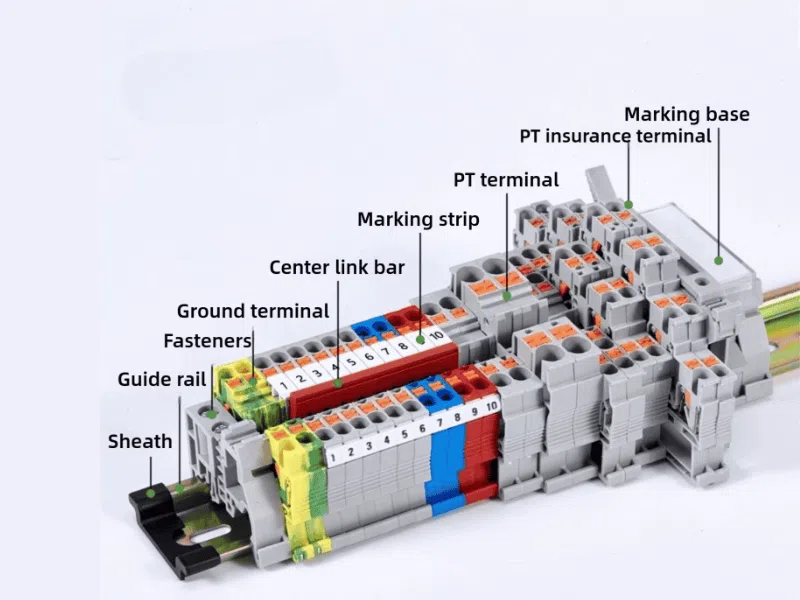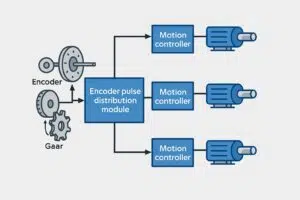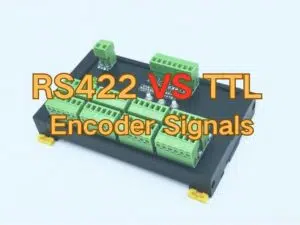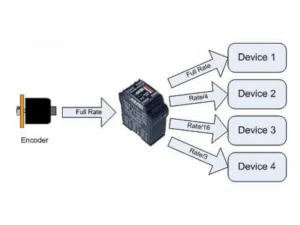The DIN rail push-in terminal block has become the go-to solution for engineers designing efficient, compact, and maintenance-free control panels.
Unlike traditional screw or spring-cage types, the push-in design allows tool-free wiring, reliable contact under vibration, and easier modular organization.
This article explains how DIN rail push-in terminal blocks outperform other connection methods in wiring speed, safety, and long-term reliability — backed by data from IEC and UL-certified tests.
What Is DIN Rail Mounting and Why It Matters
A DIN rail is a standardized metal track used to mount electrical components like terminal blocks, relays, or power supplies.
Its 35mm width standard (EN 60715) allows components from different brands to fit interchangeably — making system design modular and easy to expand.
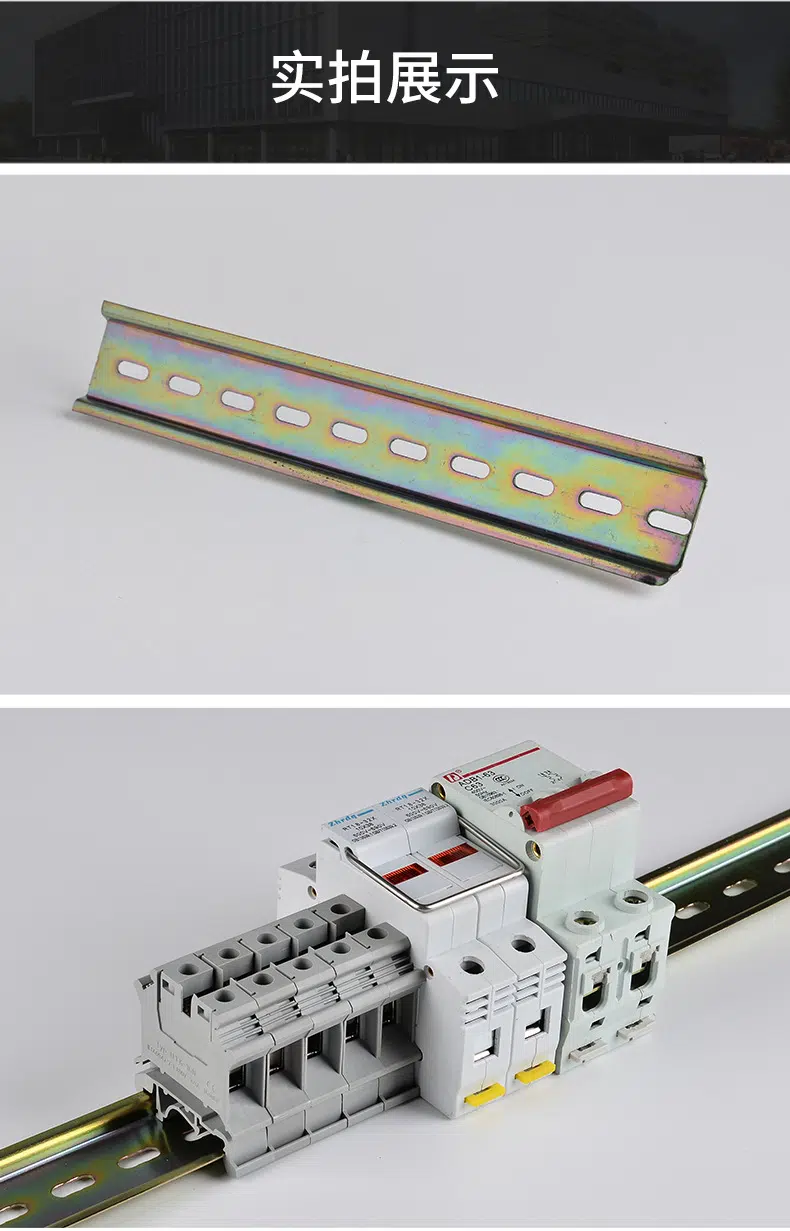
When paired with push-in terminals, the DIN rail offers three major benefits:
- Fast installation with direct snap-on mounting.
- Uniform layout for control cabinet organization.
- Compatibility across automation and power distribution systems.
For engineers building PLC control cabinets or machine interfaces, this combination ensures clean wiring, easier inspection, and consistent performance.
Related reading: What Is a Push-in Terminal Block and How It Works
Advantage 1 – Space and Organization in Control Panels
DIN rail push-in terminal blocks are designed to save both time and space in control cabinet layouts.
Their compact profiles and multi-level configurations reduce installation area by up to 40%, compared with traditional screw-type terminals.
Each terminal block snaps securely onto the DIN 35 rail, maintaining a clean and organized wiring path.
Color-coded housings, labeling slots, and modular jumpers simplify circuit identification — crucial for PLC control panels and automation wiring where every millimeter matters.
For instance, the AOSI PT2.5-3L multi-level terminal supports three vertically arranged connection levels in one compact unit,
allowing engineers to route signal, power, and ground wires within a single footprint.
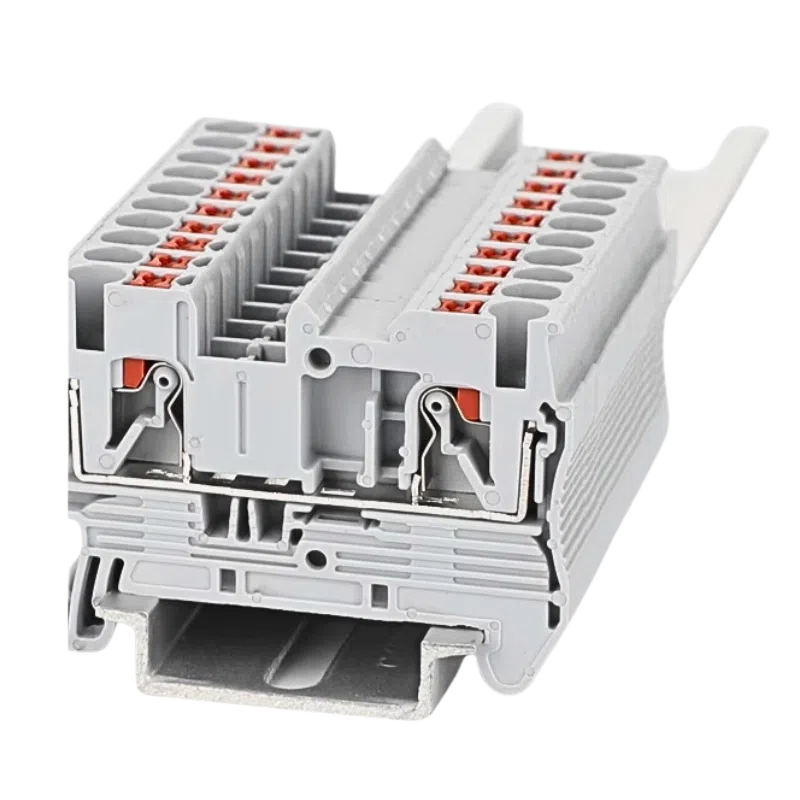
AOSI DIN Rail Push-in Terminal Series
- Engineered for industrial automation, AOSI’s DIN rail push-in terminals deliver fast wiring, vibration-proof reliability, and maintenance-free operation for control cabinets.
Advantage 2 – Faster Wiring and Assembly
One of the biggest advantages of DIN rail push-in terminals is their wiring speed.
Instead of manually tightening screws, engineers can simply insert pre-ferruled wires directly into the clamp —
a process up to 70% faster than conventional methods.
In large-scale production environments, this efficiency translates to measurable savings. A single technician can complete hundreds of connections per hour, shortening assembly cycles and enabling faster delivery for control cabinets and machinery panels.
Manufacturers such as Phoenix Contact and Weidmüller have validated that push-in connection technology reduces wiring time by 60–70% while ensuring uniform torque-free contact pressure.
Advantage 3 – Reliable Performance
Factories and automation systems constantly face mechanical vibration and thermal cycling.
Over time, screw terminals can loosen slightly — leading to arcing, signal loss, or even overheating.
In contrast, DIN rail push-in terminal blocks maintain constant contact pressure through a stainless-steel spring clamp.
This design prevents loosening under vibration and compensates for temperature expansion,
ensuring safe and stable conductivity for years.
These connectors comply with IEC 60068-2-6 (vibration test) and IEC 60512-11-7 (thermal endurance),
proving superior long-term reliability in industrial automation, renewable energy, and power distribution applications.
Learn how push-in terminals compare to screw types in our detailed guide:Push-in vs Screw Terminal Blocks: Which Is Best for Your Panel?
Advantage 4 – Maintenance-Free Wiring Solution
Once installed, push-in terminals require zero re-tightening — ever.
Unlike screw-based systems that demand periodic torque verification,
push-in designs maintain a consistent spring force on the conductor for the product’s lifetime.
This maintenance-free design significantly reduces downtime and inspection costs in automation plants.
According to Phoenix Contact’s Control Cabinet Study (2023),
plants using push-in wiring experienced zero torque-related failures after five years of continuous service.
For integrators and OEMs, this means higher productivity and fewer wiring-related callouts during maintenance cycles.
Advantage 5 – Flexible Wiring and Quick Testing
DIN rail push-in terminals aren’t just faster to wire — they also simplify circuit expansion and system testing.
Each terminal is built with plug-in jumpers and test points, allowing engineers to measure voltage or continuity
without disconnecting any conductors.
During PLC commissioning or maintenance, technicians can easily insert test probes into the built-in ports to monitor signals in real time.
This makes troubleshooting and functional testing both faster and safer — essential for modern automation control systems.
Because the terminal blocks are modular, additional circuits or relay lines can be added without rewiring the entire DIN rail.
It’s a design built for flexibility — supporting quick adjustments, expansions, and diagnostics in any industrial environment.
FAQs of DIN Rail Push-in Terminal Blocks
A1: DIN rail push-in terminal blocks combine tool-free wiring, compact size, and high vibration resistance. Compared with screw-type terminals, they reduce wiring time by up to 70%, save DIN rail space, and offer maintenance-free operation for PLC and automation systems.
A2: Absolutely. Both use the same DIN 35 mm mounting standard, making it easy to upgrade existing systems. Many engineers transition gradually — combining both types during maintenance cycles for flexibility.
Learn how they compare in our detailed guide: Push-in vs Screw Terminal Blocks: Which Is Best for Your Panel?
A3: Push-in terminals use stainless-steel spring clamps that maintain constant contact pressure. They withstand vibration, shock, and thermal expansion far better than screw types — proven by IEC 60068-2-6 testing.
A4: Yes. High-quality DIN rail push-in terminal blocks (such as AOSI’s series) are engineered for harsh industrial environments. They typically feature flame-retardant housing (UL94 V-0 rated), corrosion-resistant tin-plated copper conductors, and compliance with IEC 60068-2-6 (vibration) and IEC 60512-11-7 (thermal endurance) standards. This allows them to withstand extreme temperatures (-40°C to +105°C), mechanical vibration, dust, and humidity — making them suitable for applications like renewable energy (solar/wind), transportation (railway signaling), and heavy industrial automation where harsh conditions are common.
Conclusion
DIN rail push-in terminal blocks represent a new standard in control cabinet wiring — combining speed, compact design, and industrial-grade reliability.
Their tool-free, vibration-resistant design eliminates torque maintenance and improves long-term system uptime.
Upgrading from traditional screw types to push-in technology is not just faster — it’s a strategic improvement for the entire wiring process.
👉 Explore the AOSI DIN Rail Push-in Terminal Series to discover models designed for PLC, automation, and energy systems — engineered for the future of industrial connection.

